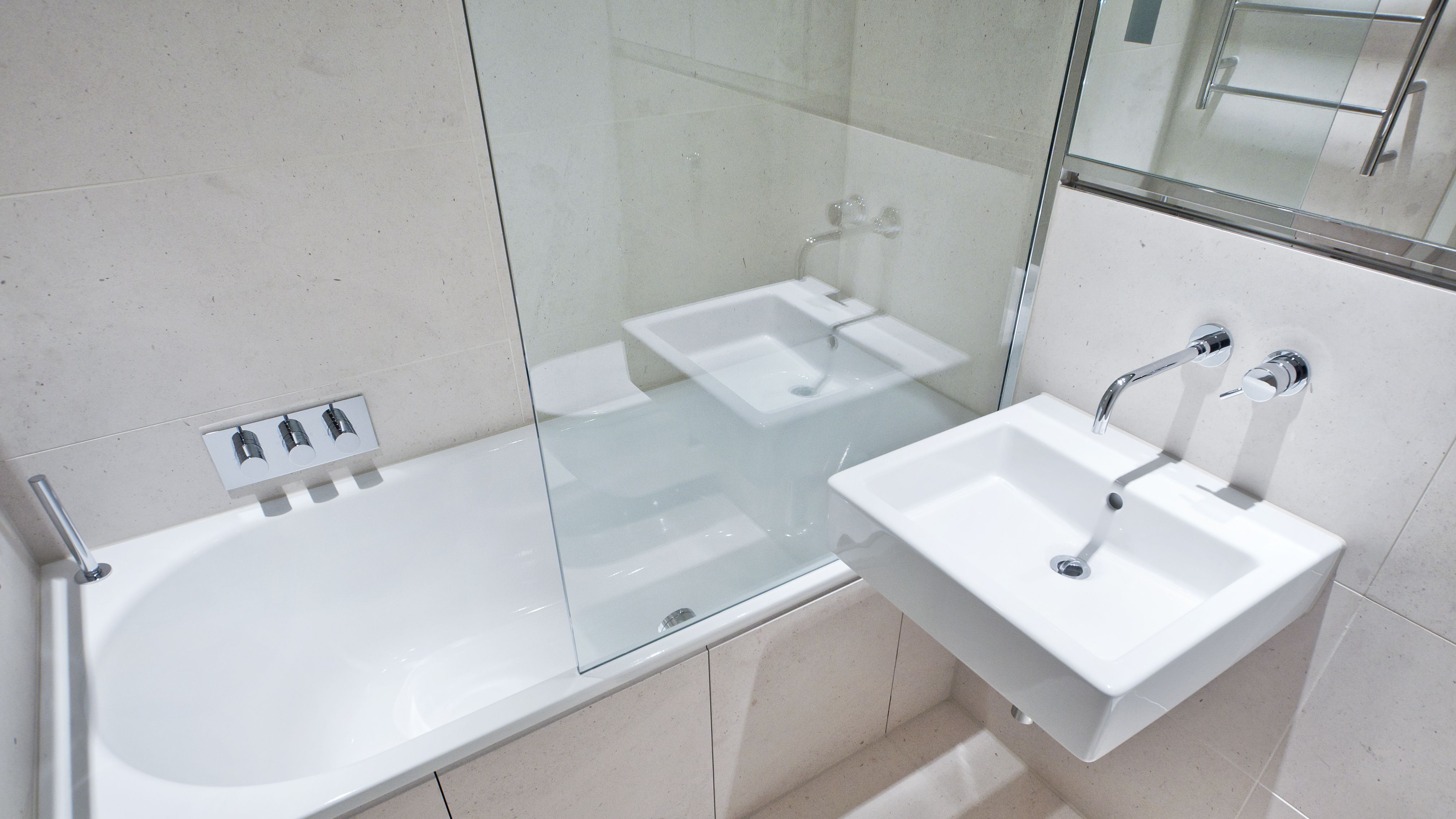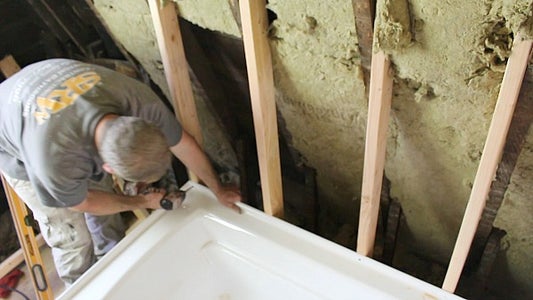We have discovered the article about Installing A Bathtub below on the web and concluded it made good sense to write about it with you over here.

Mounting a bathtub isn't specifically rocket science, yet it does require strong plumbing, carpentry, as well as occasionally, tiling skills. Changing an old bathtub with a new one is additionally a moderately tough task. If the old tub is conveniently accessible, the job can relocate quickly; if you need to open up a wall to eliminate the old bathtub and position the brand-new bathtub, the job is a lot harder. In either case, the job is within a residence handyman's abilities, although you will require an assistant to move out the old tub as well as embeded in the new one. Ensure you have actually certified yourself for the task and also are comfortable attempting it. Instead of working with a professional to take over a halfway-completed task, it is far better to consider utilizing one prior to you start. Opportunities are you may need an expert plumber to make tube links.
This write-up will certainly help you install a new bathtub in your restroom if you have actually currently acquired a new tub and don't need to alter the setup of your previous water pipelines.
Your devices and material checklist ought to make up the following:
Removing Old Touches
If you require to change old faucets with brand-new ones as a part of your installment, after that the first thing you need to do is separate the water. After doing so, activate the faucets to drain pipes any type of water remaining in the system. The process of removing the existing faucets can be fairly troublesome because of the restricted access that is often the instance.
Make use of a container wrench (crowsfoot spanner) or a faucet device to reverse the nut that links the supply pipes to the taps. Have a cloth ready for the remaining water that will certainly originate from the pipelines. When the supply pipes have been removed, use the same device to loosen up the nut that holds the faucets onto the bath/basin. You will need to stop the solitary faucets from transforming throughout this process. Once the faucets have actually been eliminated, the holes in the bath/basin will have to be cleaned of any kind of old securing compound.
Before moving on to fit the brand-new faucets, compare the pipe links on the old faucets to the new taps. If the old faucets are longer than the brand-new taps, then a shank adapter is needed for the new faucets to fit.
Suitable New Taps
If the tails of the brand-new taps are plastic, then you will certainly need a plastic connector to stop damages to the thread. One end of the connector fits on the plastic tail of the faucet as well as the other end gives a link to the existing supply pipes.
If you require to fit a monobloc, then you will call for decreasing couplers, which connects the 10mm pipeline of the monobloc to the conventional 15mm supply pipe.
Next off, place the tap in the placing hole in the bath/basin making certain that the washers remain in location in between the faucet and the sink. Safeguard the tap in place with the maker offered backnut. As soon as the tap is firmly in place, the supply pipes can be linked to the tails of the taps. The faucets can either be connected by utilizing corrugated copper piping or with typical faucet ports. The previous type needs to be connected to the faucet ends initially, tightening just by hand. The supply pipes can later on be connected to the various other end. Tighten both ends with a spanner after both ends have actually been connected.
Mounting the Bathtub
Making use of the two wood boards under its feet, place the tub in the required setting. The wooden boards are practical in evenly spreading out the weight of the bath tub over the area of the boards rather than concentrating all the weight onto four tiny factors.
The next objective is to ensure that the tub is leveled all round. This can be attained by checking the level and changing the feet on the bath tub until the level reviews level.
To mount taps, fit the bottom of the outermost flexible tap adapter to the appropriate supply pipe by making a compression sign up with; after that do the same for the other tap.
Switch on the supply of water as well as inspect all joints as well as brand-new pipework for leakages and tighten them if required. Fill up the bath tub as well as additionally check the overflow outlet as well as the regular electrical outlet for leakages.
Finally, repair the bath paneling as explained in the maker's user's manual. Tiling and also sealing around the bathtub should wait till the bathtub has actually been used at least once as this will settle it right into its last placement.
Preparing for the Installation
First of all, the sustaining framework provided with the bathroom should be fitted (if required) according to the manufacturer's directions. Next, fit the faucets or mixer to the tub. When suitable the faucet block, it is important to make sure that if the tap includes a plastic washer, it is fitted in between the bathroom and also the faucets. On a plastic bathroom, it is likewise practical to fit a supporting plate under the taps system to avoid stress on the tub.
Fit the versatile faucet ports to the bottom of both faucets utilizing 2 nuts as well as olives (often provided with the bathtub). Fit the plug-hole electrical outlet by smearing mastic filler round the sink electrical outlet opening, and after that pass the outlet with the hole in the bath. Utilize the nut supplied by the producer to fit the plug-hole. Examine the plug-hole outlet for an inlet on the side for the overflow pipeline.
Next, fit the end of the flexible overflow pipe to the overflow electrical outlet. Afterwards, screw the pipeline to the overflow face which ought to be fitted inside the bath. Ensure you use all of the provided washing machines.
Link the catch to the bottom of the waste outlet on the bathtub by winding the thread of the waste electrical outlet with silicone mastic or PTFE tape, and also screw on the catch to the outlet. Connect the bottom of the overflow tube in a comparable manner.The bathroom must now be ready to be suited its last setting.
Tiling Around the Bathtub
In the location where the bathroom satisfies the floor tile, it is needed to seal the joins with a silicone rubber caulking. This is important as the installation can move enough to fracture an inflexible seal, triggering the water to penetrate the wall surface in between the bath and the tiling, bring about issues with moisture and feasible leaks to the ceiling below.
You can pick from a range of coloured sealants to assimilate your components and installations. They are sold in tubes and also cartridges, as well as are capable of sealing gaps approximately a width of 3mm (1/8 inch). If you have a larger void to fill up, you can load it with spins of soaked paper or soft rope. Keep in mind to always fill up the bathtub with water prior to sealing, to allow for the motion experienced when the tub remains in use. The sealer can split fairly very early if you do not consider this activity before sealing.
Alternatively, ceramic coving or quadrant ceramic tiles can be used to border the bathroom or shower tray. Plastic strips of coving, which are easy to use as well as reduce to size, are additionally quickly readily available on the market. It is advisable to fit the ceramic tiles using waterproof or waterproof sticky and cement.
Bathtub Installation
How Important Is A Bathtub To Your Home?
High-quality baths, showers, and other bathroom updates are necessary when considering a smart investment in your home. It’s a room that you go to every day and one that is constantly being used by guests.The bathroom is one of the top trafficked rooms in a home and also one of the most valuable in terms of home resale.
Install Piping Before Tub
You will be using your existing drain and waste vent system, but pipes required include the hot and cold water supply lines and a pipe leading to a shower head. A mixing valve and shower head are also needed. Air chambers may be required.
Position the Tub
Lower the tub into place so that the continuous flange fits against the wall studs and rests on 1’x4' or 2’x4' supports. Anchor the tub to the enclosure with nails or screws inserted through the flanges into the studs.
NOTE: Remember, bathtubs and shower stalls may require support framing. A bathtub filled with water is extremely heavy, so check building codes and framing support before installing the tub.
Assemble Drain Connections
Assemble the bathtub drain connections by connecting the tub overflow with the tub drain above the trap, not beyond it. The trap will have a compression fitting that screws over the arm of the overflow assembly.
Place a Pipe For the Shower Head
First, locate a brass female threaded winged fitting and attach it to a framing support via a screw or a nail. Then run a pipe up the wall for the shower head. Sweat or solder the other side of the brass fitting to the top of the pipe.
Attaching Hot and Cold Water Lines
Attach your water lines for both hot and cold by sweating these directly into the hot and cold ports of the mixing valve. The mixing valve will be how water enters the tub’s system, not by the pipes themselves.
Install the Spout
Extend a piece of 1/2 inch pipe, or whichever length is specified in the manufacturer’s instructions, for the tub spout. Sweat on a male threaded fitting at the end of the pipe or use a brass nipple of the proper length and a 1/2 inch cap.
NOTE: At this point you should have your rough-in plumbing work inspected before proceeding further.
Check For Leaks
Restore the water pressure and check the drain connection and the supply pipes for any sign of leaking.
estore the Bathroom Wall
Replace the wall with moisture-resistant drywall as a base for your wall covering. Seal the joints between the wall and your new tub with silicone caulk as protection against water seepage.
https://www.berkeys.com/2016/12/02/bathtub-installation-dallas/

I found that write up about Installing A Bathtub while doing a lookup on the web. Enjoyed reading our write-up? Please share it. Help somebody else discover it. Thanks a lot for taking the time to read it.
Customer Reviews